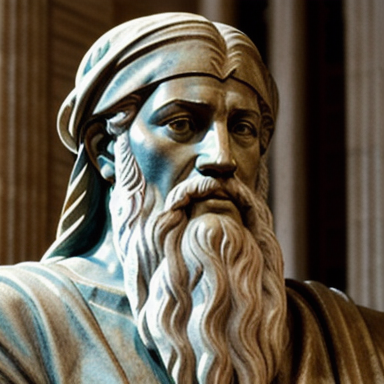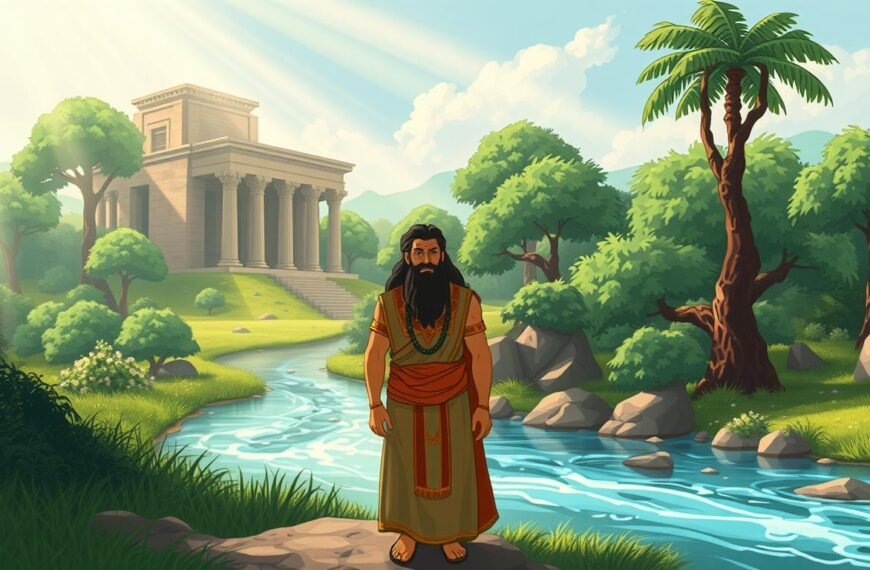The height of Moses in the Bible is a topic that has intrigued scholars and believers alike for centuries. While the Bible does not provide a specific measurement of Moses’ height, there are several interesting aspects to consider when exploring this subject. Understanding the height of Moses can provide valuable insights into his character, his relationship with God, and the significance of his role as a leader.
Furthermore, the absence of a specific height measurement allows individuals from all walks of life to relate to Moses. Regardless of their own physical appearance, people can identify with Moses’ struggles, doubts, and triumphs. This inclusiveness reinforces the universal message of the Bible and the idea that anyone, regardless of their physical attributes, can be used by God to accomplish great things.
It is important to note that while the Bible does not provide an exact height for Moses, it does offer glimpses into his physical appearance. For example, in the book of Exodus, it mentions that when Moses came down from Mount Sinai after receiving the Ten Commandments, his face was radiant. This radiant glow may symbolize the divine connection he had with God and the transformational power of his encounter.
Additionally, various artistic interpretations and cultural depictions have portrayed Moses in different ways. Some artists have depicted him as a towering figure, emphasizing his authority and leadership, while others have depicted him as an ordinary-looking man, highlighting his relatability and the idea that God can use anyone, regardless of their physical appearance.
In conclusion, while the Bible does not provide an exact measurement of Moses’ height, the absence of this detail carries significant symbolic meaning. It emphasizes the importance of spiritual qualities over physical attributes and allows individuals from all backgrounds to identify with Moses’ journey. Through artistic interpretations and cultural depictions, Moses continues to inspire and teach valuable lessons about faith, leadership, and the power of a deep relationship with God.
The Biblical Account of Moses
Moses is one of the most prominent figures in the Bible, playing a crucial role in the liberation of the Israelites from slavery in Egypt and receiving the Ten Commandments from God on Mount Sinai. His life is chronicled in several books of the Bible, including Exodus, Leviticus, Numbers, and Deuteronomy. Moses is revered as a prophet, a lawgiver, and a leader of God’s chosen people.
**In terms of physical appearance**, the Bible does not provide a specific description of Moses’ height. However, it does offer some insights into his overall appearance. For instance, in Exodus 34:29, it is mentioned that Moses’ face shone with radiance after he had been in the presence of God. This phenomenon, known as the “radiant face of Moses,” is believed to symbolize his close relationship with the divine and his role as a mediator between God and the Israelites.
**The significance of height** in biblical narratives extends beyond a literal measurement. In the Bible, height often carries symbolic meaning and represents power, authority, and strength. For instance, the story of David and Goliath highlights the contrast between the towering stature of Goliath and the seemingly insignificant height of David. David’s victory over the giant Goliath illustrates that true strength comes from faith in God rather than physical stature.
Moses’ Role as a Leader and Prophet
Moses’ role as a leader and prophet is central to the biblical narrative. He is chosen by God to deliver the Israelites from slavery in Egypt and guide them to the Promised Land. Moses’ leadership qualities are evident throughout his journey, as he navigates numerous challenges and confronts Pharaoh to secure the freedom of his people.
The Burning Bush and the Ten Plagues
One of the most well-known events in Moses’ life is his encounter with the burning bush. According to Exodus 3, Moses sees a bush that is on fire but not consumed by the flames. It is during this encounter that God reveals His divine plan to Moses and commissions him to lead the Israelites out of Egypt.
As Moses confronts Pharaoh, God unleashes a series of ten plagues upon Egypt as a demonstration of His power and a means to convince Pharaoh to release the Israelites. These plagues include turning the Nile River into blood, bringing forth swarms of frogs, and sending a thick darkness over the land.
The Ten Commandments and the Promised Land
After the liberation from Egypt, Moses leads the Israelites through the wilderness for forty years. During this time, he receives the Ten Commandments from God on Mount Sinai. These commandments serve as a moral and ethical guide for the Israelites and continue to hold significant religious and cultural importance today.
Despite his pivotal role in leading the Israelites, Moses is ultimately unable to enter the Promised Land. According to the Bible, this is due to a moment of disobedience when Moses strikes a rock to bring forth water instead of speaking to it as God had commanded. Nonetheless, Moses’ legacy as a faithful servant of God and a fearless leader endures.
Interpretations and Speculations
The height of Moses has been a subject of speculation and interpretation in various religious traditions. While the Bible does not explicitly mention Moses’ height, different interpretations have emerged over time.
In Jewish tradition, Moses is often depicted as a towering figure, symbolizing his spiritual and leadership qualities. Some interpretations suggest that Moses was taller than the average person, highlighting his commanding presence. This portrayal emphasizes his authority as the deliverer of the Hebrew people and the receiver of the divine law.
On the other hand, some scholars argue that Moses’ height is not a significant aspect of his character. They believe that focusing on his physical stature detracts from the profound spiritual and moral teachings associated with his life and teachings. According to this perspective, Moses’ true greatness lies in his courage, wisdom, and unwavering faith.

Speculations about Moses’ height have also arisen based on historical and cultural context. In ancient times, height was often associated with power and authority. As a leader of the Hebrew people, Moses would have been expected to possess physical strength and presence. Some theories propose that Moses might have been taller than the average person of his time, reflecting his role as a prominent figure in shaping the destiny of his people.
Exploring various sources and texts that mention Moses’ height can provide further insights. The Book of Exodus describes Moses as “heavy of mouth and tongue” (Exodus 4:10), implying a potential physical imperfection. However, this reference does not directly relate to his height. Other texts, such as the Talmud and Midrash, offer additional perspectives on Moses’ physical attributes but do not provide a definitive answer to his height.
It is important to note that the height of Moses should not overshadow the central messages conveyed through his actions and teachings. His character and impact on history lie in his devotion to God, his advocacy for justice, and his role in leading the Israelites out of bondage in Egypt. Regardless of his physical stature, Moses continues to inspire individuals around the world through his unwavering faith and commitment to righteousness.
Historical Context
In order to understand the potential height of Moses in the Bible, it is important to consider the historical context of ancient times. Comparing average heights from different time periods can provide insights into the general physical stature of people during those eras.
**During ancient times, the average height of individuals was generally shorter than what we see today**. Factors such as health, nutrition, and genetics played a significant role in determining height. It is important to note that **height variations existed within populations due to various factors**.
**Health and nutrition were major determinants of height in ancient times**. Access to a balanced diet, including essential nutrients, vitamins, and minerals, played a crucial role in proper growth and development. Poor nutrition and lack of access to adequate healthcare could result in stunted growth and shorter stature. Additionally, **infectious diseases and harsh living conditions could also impact overall health and height**.
**Genetics also played a role in determining height**. Different populations have genetic variations that can influence height. For example, populations from certain regions may have genes that are associated with taller or shorter stature. These genetic factors, combined with environmental conditions, contributed to the height variations observed in ancient times.
When considering Moses’ height specifically, it is important to note that the Bible does not provide specific details about his height. Therefore, any discussion about his height is speculative and based on interpretations and cultural traditions. **The focus should be on the significance of his character and the messages conveyed through his actions, rather than his physical stature**.
Factors such as familial traits, regional characteristics, and individual genetics could have influenced Moses’ height within the context of ancient Egypt. However, it is important to approach these discussions with humility and recognize that **our understanding of historical figures is often shaped by cultural biases and interpretations**.
Conclusion
After considering the historical context, the impact of health, nutrition, and genetics, as well as other factors that could affect Moses’ height, we can draw some conclusions.
Moses’ exact height is not mentioned in the Bible. While this may leave us curious about his stature, it is important to remember that the Bible prioritizes spiritual and moral teachings rather than physical attributes. The focus is on Moses’ role as a leader, prophet, and servant of God.
However, by examining the historical context, we can gain insights into the average heights of people in ancient times. Based on archaeological evidence and skeletal remains, it is estimated that the average height of individuals during Moses’ era ranged from 5’3″ to 5’6″. It is likely that Moses fell within this range.
Moreover, it is crucial to acknowledge that height can be influenced by various factors, including genetics, health, and nutrition. While we do not have specific information about Moses’ ancestry or health conditions, we can assume that these factors played a role in determining his height.
The significance of Moses’ height lies not in its specific measurement, but in the impact of his leadership and the divine guidance he received. Moses’ towering presence in biblical narratives stems from his unwavering faith, his courage to stand up against oppression, and his role as the deliverer of the Israelites from slavery in Egypt. His height, or lack thereof, does not diminish the magnitude of his contributions to the Israelite people and the development of their faith.
Reflecting on Moses’ story, we are reminded that physical attributes do not define a person’s worth or influence their ability to make a difference in the world. Instead, it is their character, integrity, and relationship with God that truly matter.

Rockin’ the faith, one verse at a time!
Growing up, the Bible’s stories deeply impacted me. Now, with over 15 years of preaching experience, I blend timeless teachings with modern technology, making them relevant for today’s world.
Bible Hub Verse is my platform to share historical insights and thought-provoking articles, exploring both familiar and uncommon Christian topics. My passion is building a welcoming online space for everyone to learn, grow in their faith, and discover the Bible’s enduring message.
Join the journey!
God bless you.














